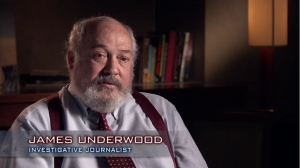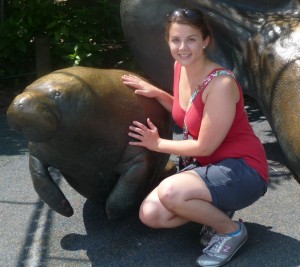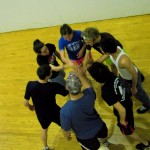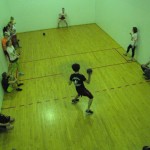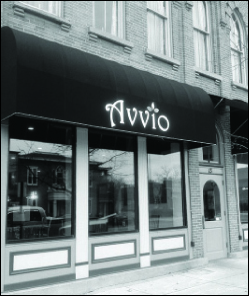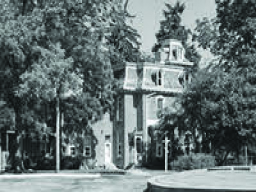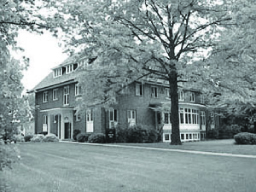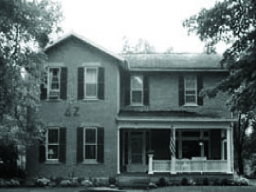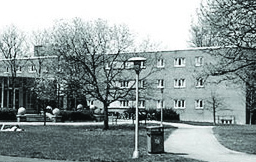Editor’s Note: This feature story was written by a member of the community discussed and represents her perspective.
_______________________________
Imagine sitting in a classroom and being the only person that looks like you. Imagine being the only one with your skin complexion, similar features, background or experiences and feeling like an outcast in a room full of people trying to learn.
Black students account for 4.6 percent of the student population here at OWU. Of the 1,952 members of the entire student body, 89.7 students are African American. There are seven current African American and African/ Caribbean native professors actively teaching here.
It’s not uncommon to be the only black person in a class or to go through an entire day without seeing a professor or another student of color. How do these students of color cope? What are the professor’s perspectives? What are their different experiences?
The Minority
One of the most well-known African American professors on campus is Emmanuel Twesygie, or as many students refer to him “E.T.” Twesygie can be seen wearing thick brimmed circular glasses, a sandy brown tweed blazer, a sky blue buttoned collared shirt, and a neatly tied tie.
His most notable features are his thick British American accent and a coarse one inch afro. Or as he would refer to it: “my nappy head.”
Although students get a kick out of his eccentric teaching style and catch phrases such as “PG-18” they are not aware of how he developed his unique teaching techniques. Twesygie said that as a black professor, students assume he’s here because of affirmative action.
“We have to prove intelligence…when I tell students I wrote a book they don’t believe it. Only white people write books?” he said, followed by a chuckle.
When sitting in one of Twesygie’s church history, theology or Christian ethics classes, there is a different structure to the class, “a method to his madness”.
It’s not lectures and power points or based off of hours of note taking and stenography. Participation, interaction and in depth thinking is required in all his courses. He teaches with a sense of humor on a serious topic, like religion.
“I don’t think I teach any differently than a white professor,” he said. “I just go off my experiences. White professors tend to leave out topics they don’t feel comfortable with. Slavery, race and gender (are) about tradition. I’ve been through it so I can talk about it.”
“I’m not afraid to single out a student if I think they can relate and share,” he said. “You are black has this ever happened to you?”
Junior Briana Chelsea Perez is 5’10 with lanky limbs, a short bob cut, and thick black glasses.
Perez is used to having to be the voice for the black perspective in a classroom setting.
“When the topic of racial issues and black history questions are asked, everyone looks at me for the answer, which at times can be quite annoying,” Perez said.
Originally from Brooklyn, New York, Perez is a Jamaican-American who was raised by a single mother. In such a large city, diversity is not an issue. New York is a stopping ground for so many cultures and ethnicities that the shift to a desolate city like Delaware came with some culture shock attached.
Perez said not only was the geographical shift hard to make, but in combination with financial and social issues and lack of diversity on campus, these last three years have not been the easiest.
“At times I have found it to be quite boring here and (have) felt like the black community at Ohio Wesleyan is extremely limited,” she said while watching BET (Black Entertainment Television). “The only reason why I have stayed this long at Ohio Wesleyan is because, financially, they have helped me a lot.”
Perez has received numerous financial aid awards and scholarships. This is how the majority of black students say they are able to afford OWU. However, she said she has seen a lot of black students leave because they can’t afford to stay.
Extra Curricular Acceptance
2011 alum Alum Tyler Cordell said in her four years at OWU she has seen black students come and go. Being the face of the OWU women’s basketball program and the only black member of the Lacrosse team Cordell was no stranger to representing diversity at the University.
“I saw so many friends leave every year I was at OWU,” she said. “People always think it’s because we can’t make it academically. There are so many other factors that come into play. I was able to make the best out of my experience by networking. But I also knew my role. Anytime we had a black recruit on campus, I knew I would be showing them around.”
2011 Alumna Larissa Anderson agreed with Cordell on the issue of diversity at OWU.
“They (the school) are real quick to find a black face to put on a brochure…to show that it’s diverse. To me that doesn’t show diversity,” said Anderson.
Perez shows a larger framed portrait with dozens of girls grinning while posing and holding up a triangle symbol with their arms. This is the symbol for Delta Delta Delta sorority, which Perez was a member of last year.
Looking at the picture yet again, much like in the classroom, Perez said she was playing the role of the “token” black girl.
Me: “What was it like being one of the only black women in a sorority?”
Perez: “The sorority was more of a sisterhood,” she said as she gazed at the picture and smiled. “It’s one of the only times at OWU that I didn’t feel like just the black girl. Or that I had to prove myself to others. I felt like I was part of a group…a family…We all had something in common that had nothing to do with race. I think if more students of color joined them it would really help their experience here.”
Me: “Did you ever get any questions about being a black woman?”
Perez: “Yes,” she laughed. “I have had that happen a lot. I have been asked various racial questions like, ‘why do you guys do stuff like that’ or, ‘why is your hair like that’. I feel like it is not my job to educate them on those things even though I do not mind doing it. I get annoyed sometimes about it because I don’t ask questions like, ‘why do you have hair like that’ or, ‘why do you guys act the way you do.’”
Perez said she got these questions more from students outside her sorority rather than in it.
“I look at you as a person and not by the color of your skin, it’s not like I don’t notice it, but it’s like I care more about you as the person and not your racial outline”.
Stereotypes
Black culture, rap, hip hop, and urban culture have become increasingly popular over the years among teens and young adults.
People are constantly trying to learn and emulate the behavior seen in the media. Many black students on campus said they have become accustomed to being asked questions like; “Can I touch your hair?”,
Freshmen volleyball and basketball player Latavia Croom said she gets asked these questions all the time.
“I get a lot of comments from friends here at OWU,” she said “Mostly questions about my hair and silly questions about how to do a certain dance or why do black people say this or that.”
“It’s kind of annoying, though because some of the questions I get I’m like ‘where did you get that from?’ I guess there are just a lot of stereotypes.”
A former OWU student, Chanel Poston, said her first day on campus she was asked, “How does it feel to be a black woman at OWU?”
Poston: “I told the girl I don’t know. I’ve only been on campus an hour, I’ll let you know when I’ve been here longer. A couple weeks later, another girl told me I was her first black friend. I continually got these types of uncomfortable questions and statements at OWU.”
Black males on campus have the worse retention rate of all students. Freshmen Getner Fabre, said he is aware of this fact and he feels more pressure to succeed in the classroom over his peers.
“I feel a lot more pressure being a black guy,” he said. “Because if you ever take a picture of one of my class rooms you will see me being the one that stands out being the only black kid in my class. I know that I have to keep my grades up and do a lot better than everyone. If I don’t, then it will look bad for the black students on campus, the school and my parents.”
Poston said while she was at OWU, she also felt the pressure to stay ahead of her peers.
“I would always come early and sit in the front of my classes,” she said. “I would always dress nice; I never wanted to be the black girl that stood out.”
African American students and professors at OWU constantly feel the need to prove themselves. They say they are representing an entire community.
Being bombarded daily with questions about their culture and behavior is yet another reminder of their minority status on campus.
There are sources such as sororities, fraternities, sports teams, organizations and clubs where the black community say they feel the most support on campus.
In the end, all the obstacles that they face while attending OWU will most likely occur in the real world, which is why many students stay.
